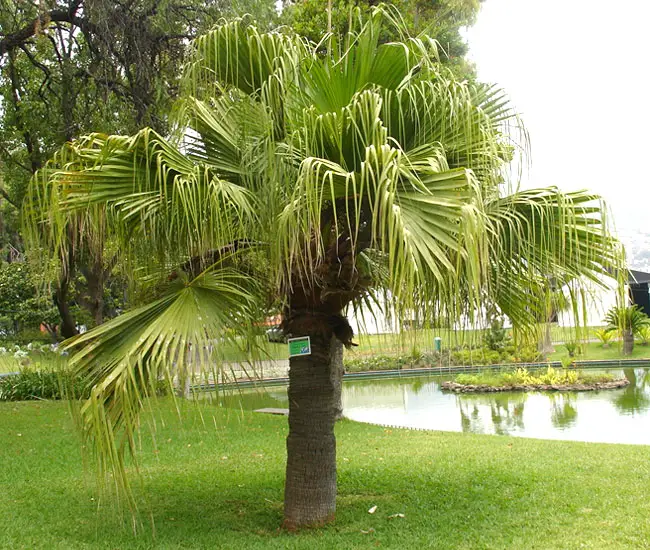
The Chinese Fan Palm Tree, scientifically known as Livistona chinensis, is native to various regions in East Asia. Its natural habitat spans from Southern Japan, through parts of China, Taiwan, and into the Ryukyu Islands.
This palm is well adapted to subtropical and tropical climates and is commonly found in forests, valleys, and near water sources in its native range. Due to its elegant appearance and adaptability, the Chinese Fan Palm has also become a popular ornamental plant in many other parts of the world with similar climate conditions.
With proper cold protection and care, this palm can be grown in states like Alabama, Arkansas, New Mexico, Oklahoma, South Carolina, and Texas, which generally have milder winter climates.
Quick Facts:
| Scientific name: | Livistona chinensis |
| Common names: | Chinese Fan Palm, Chinese Fountain Palm, Fountain Palm. |
| Origin: | Native to China and southern Japan. |
| Growth Rate: | Slow. Up to 25 ft tall and 15 ft wide. |
| Cold Tolerance: | USDA Zones 9a (20 – 25 F) to 11 (above 40 F). |
| Light Req: | Partial shade to full sun |
| Water Req: | Moderate. |
| Soil Req: | Widely adaptable. |
| Fruit: | Yes. Grayish-blue. Not edible. |
| Propagation: | By seeds. |
Chinese Fan Palm Appearance
Trunk: The Chinese Fan Palm boasts a singular, slender trunk that typically displays shades ranging from light gray to brown. In its natural habitat, this trunk can reach towering heights of 20 to 40 feet. However, when thoughtfully cultivated in gardens, it often retains a more modest stature, standing at approximately 10 to 25 feet in height.
The trunk has a distinct grey-brown hue and bears the marks of old leaf scars, creating a textured and visually appealing surface. Particularly noteworthy is the slight swelling at the base of the trunk, measuring around 17-18 inches in diameter.
Leaves: The palm’s leaves are large and fan-shaped, which is a defining characteristic of this species. Each leaf is deeply divided into numerous segments that radiate from a central point, creating a circular fan-like shape. The leaves are typically bright green and have a glossy sheen. They can grow up to 3 to 4 feet in diameter and are borne on long, arching petioles.
Crown: The leaves are arranged in a dense, spherical crown at the top of the trunk, giving the palm a symmetrical and graceful appearance. The crown can have a slightly arching or drooping form, adding to its aesthetic appeal.
Chinese Fan Palm Flowers and Fruits
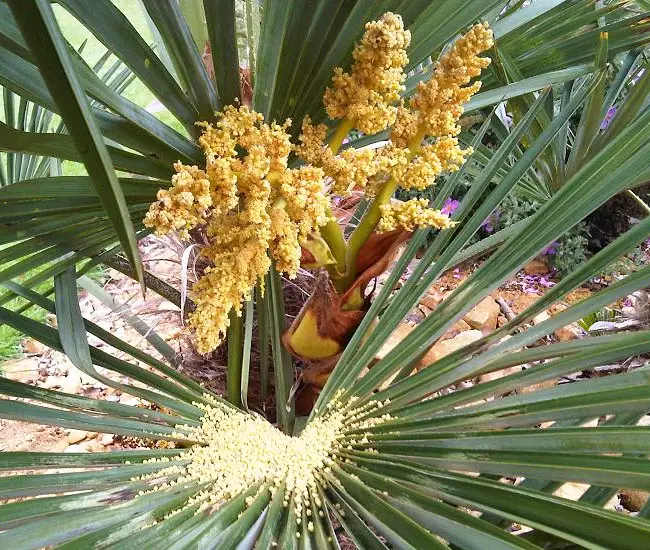
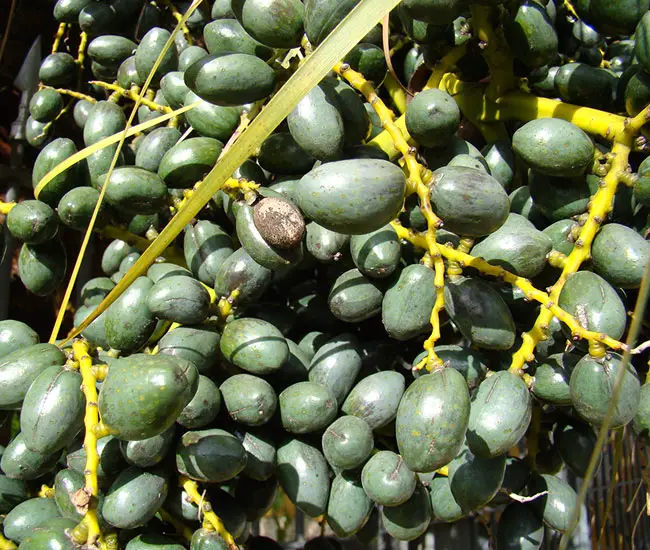
The Chinese Fan Palm produces small, inconspicuous flowers that are typically pale yellow to creamy in color. These unassuming blossoms are arranged on large, branched inflorescences that emerge from the base of the palm’s crown. While individually, the flowers may not be striking, collectively, they contribute to the palm’s overall visual appeal.
Following the flowering stage, the Chinese Fan Palm gives rise to small, round, and fleshy fruits. Initially green in color, these fruits gradually ripen into a dark red or black hue.
They are relatively small in size but serve as an essential food source for various wildlife and birds, enhancing the ecological significance of this palm.
While not commonly consumed by humans due to their limited flesh, the fruits contribute to the palm’s overall charm, and their transition from green to dark hues adds a delightful touch of color to the palm’s lush, green canopy.
How To Care For Chinese Fan Palm
In its native habitat, this palm exhibits slow growth, reaching impressive heights of up to 50 feet. However, under cultivation, it typically maintains a more modest stature, rarely surpassing 25 feet in height and spreading up to 15 feet in width.
It’s worth noting that this palm’s growth rate can be accelerated with appropriate fertilization.
The Chinese Fan Palm (Livistona chinensis) demonstrates commendable cold hardiness, withstanding temperatures as low as 10°F. It thrives within USDA Hardiness Zones 9a (with temperatures ranging from 20 to 25°F) to 11 (above 40°F).
This palm flourishes when situated in partial shade or full sun and exhibits a preference for soil that is moist yet well-drained. Remarkably, it possesses impressive drought tolerance.
To ensure it receives essential nutrients and to prevent nutritional deficiencies, it is advisable to apply a high-quality palm fertilizer with a continuous-release formula twice annually during the growing season.
Propagation is typically accomplished through seeds, allowing gardeners to expand their collection of this elegant palm species.
Chinese Fan Palm Pictures
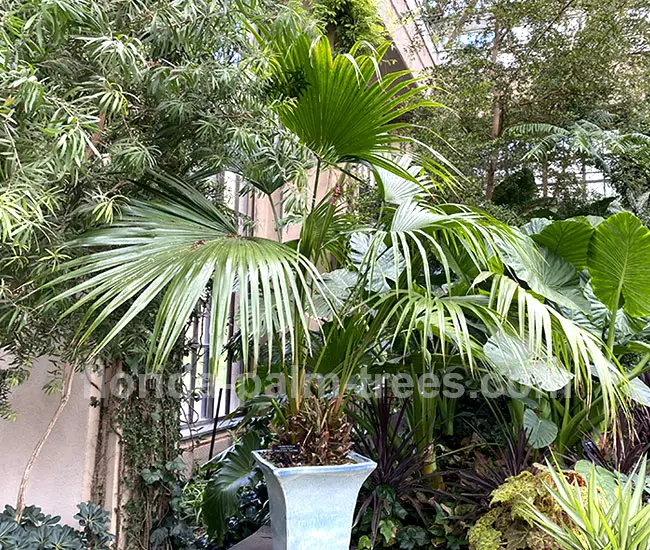
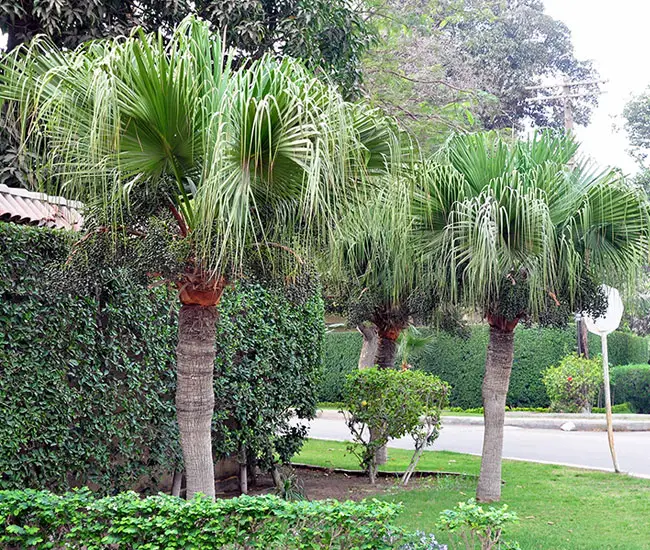
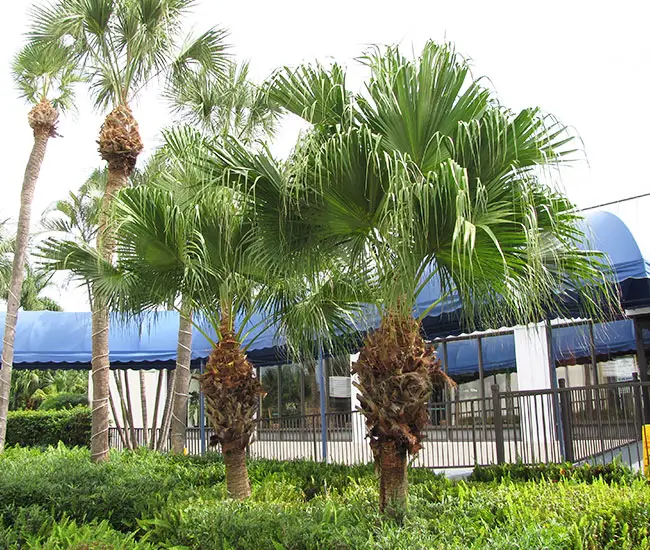
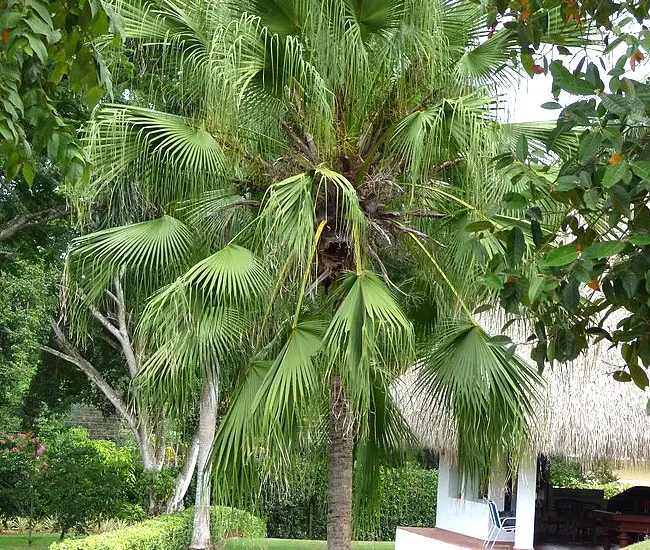
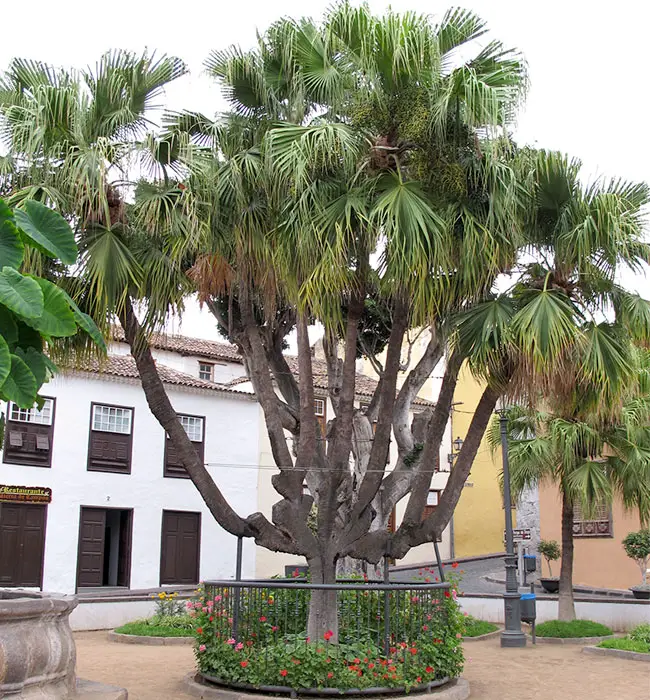
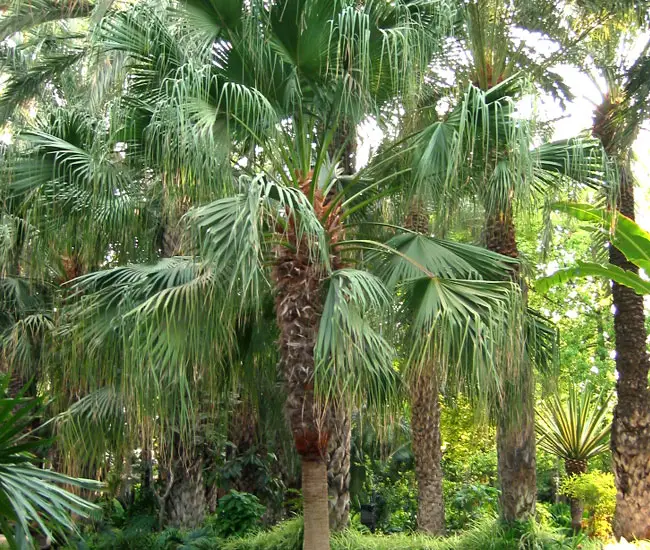
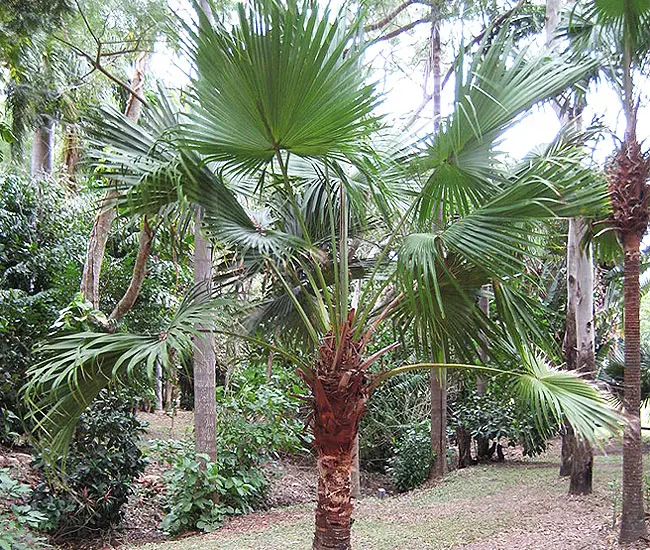
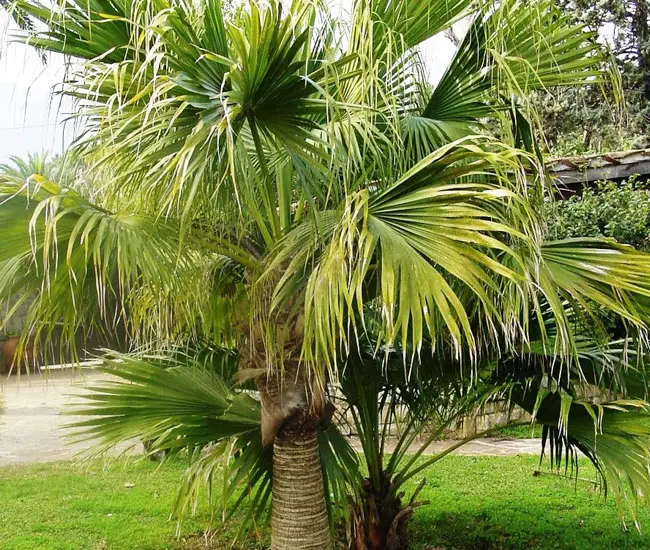
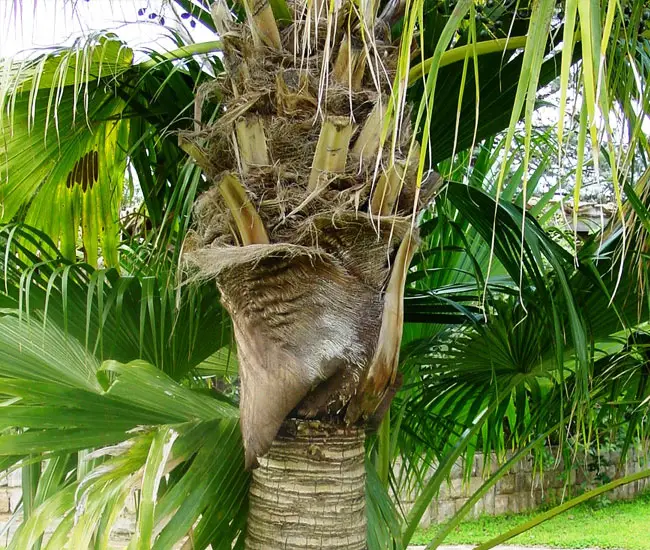
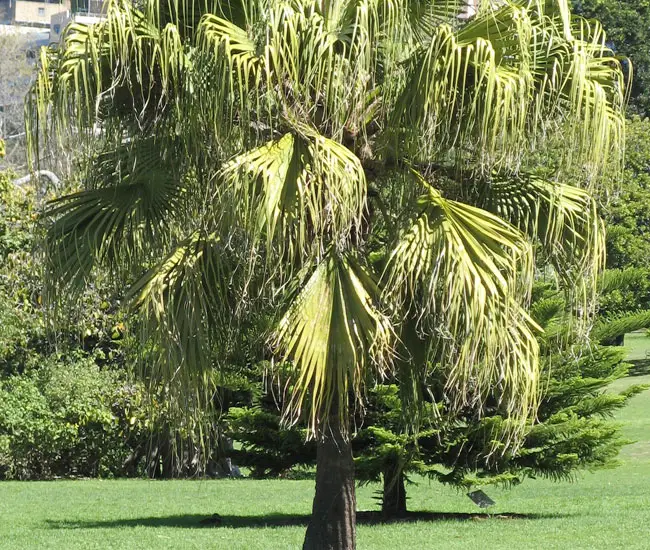
More information can be found on EDIS and Floridata sites.

remarkable appearance, likeable indoor quality
The Chinese Palm can tolerate single digit temps (6F) as the one I have had for 7yrs now standing tall at 6ft from a seedling without any visible cold damage to the foliage. I have since moved to another state, however, I still posses ownership of the property and have the benefit observing the growth of that particular Palm. As this article states, the Chinese Palm can handle drought extremely well even in the Sandhills of Sc. In addition, It is no where near a building, nor does it receive any special protection from me. An extremely reliable Palm for even zone 7b!
I was wondering if Chinese Fan palms are easily transplanted. We have (5) 20-25′ palms and want to move them to make room for a new neighborhood front entrance sign.
Any information would be greatly appreciated.
Thank you!
Lori True